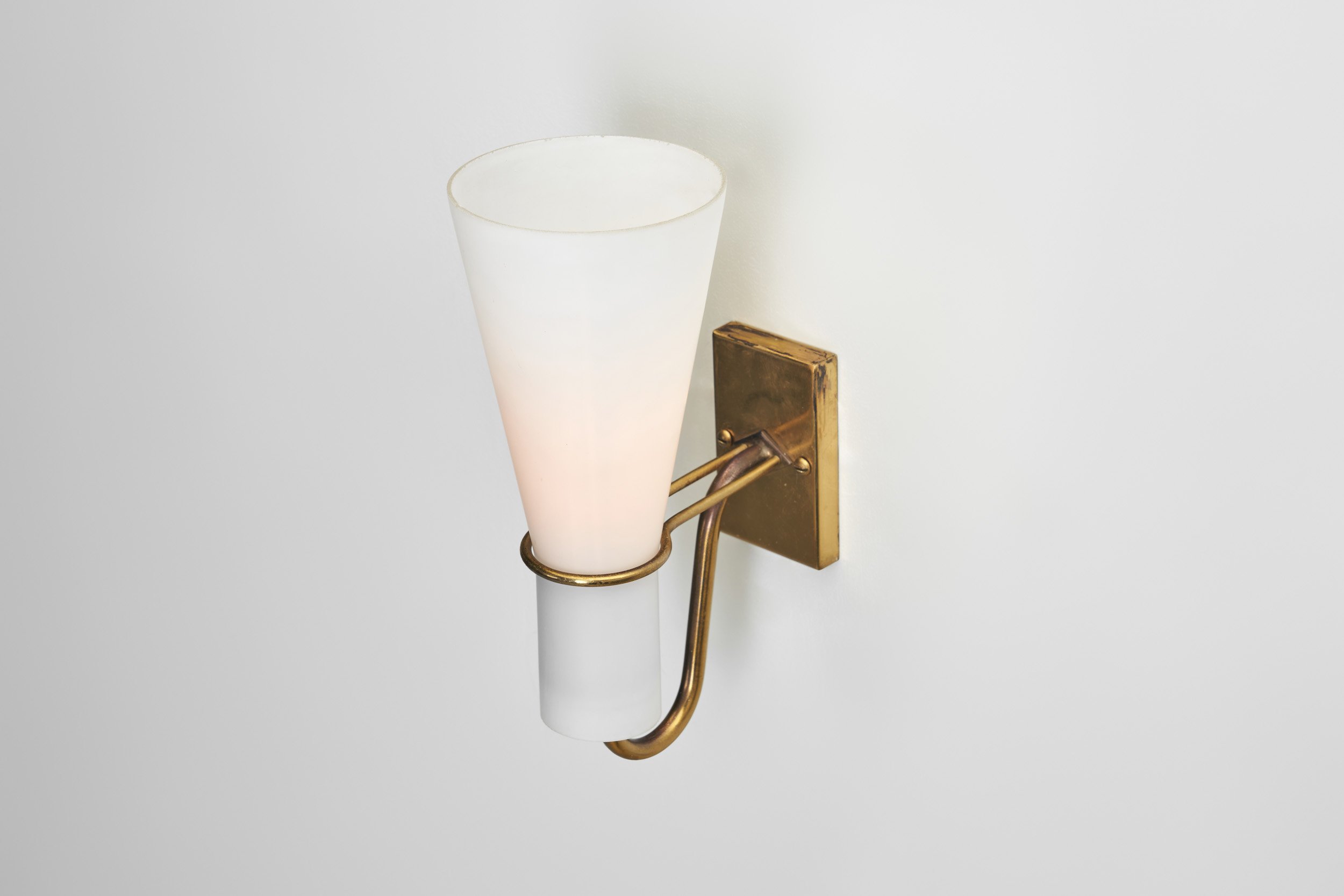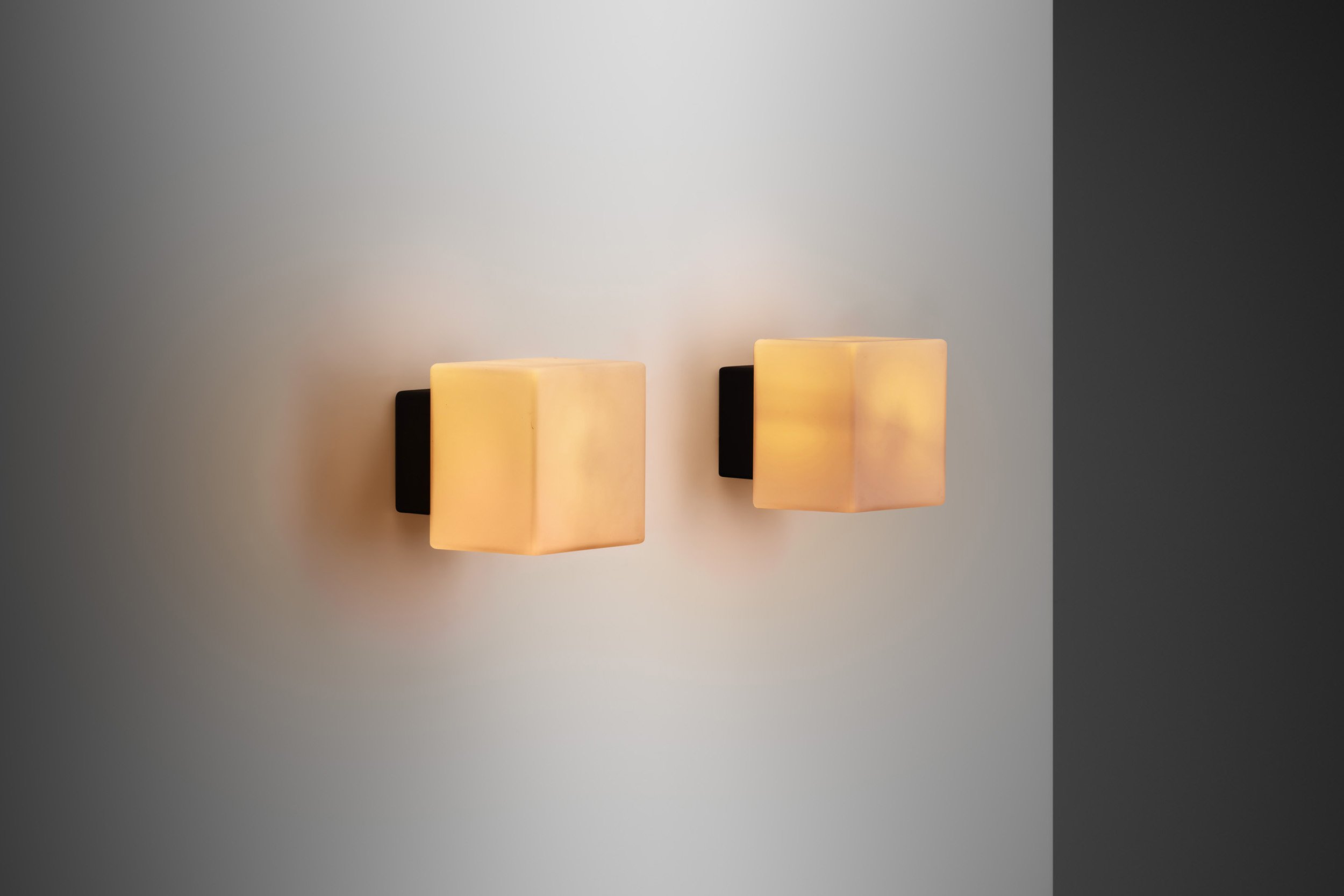Pair of Brass and Opal Glass Wall Lights by Hans Bergström for ASEA, Sweden 1950s (sold)












Pair of Brass and Opal Glass Wall Lights by Hans Bergström for ASEA, Sweden 1950s (sold)
Hans Bergström’s designs are just as scarce today as the information available on the Swedish designer, despite his undeniable quality of output. Guided by the mantra, “Light must be white and shine freely,” he designed and produced functional and modern fixtures that were intended to brighten up entire spaces. Bergström had a modernist approach based on quality and architectural precision, and was the favourite lighting designer of many fellow architects, among them Bruno Mathsson.
These lamps serve as great examples of the enduring quality of mid-century Swedish craftsmanship. Swedish mid-century modern design, marked by its emphasis on simplicity and functionality, sought to bring beauty into everyday life. Bergström's pieces encapsulate this ethos, transcending mere utilitarianism to become 'objets d'art' that enhance living spaces. Manufactured by ASEA, a Swedish powerhouse in electrical engineering and industrial design, these lamps embody the marriage of aesthetics and utility. The choice of brass and opal glass as primary materials for these lamps speaks to the enduring appeal of this combination in mid-century lighting design. Brass, with its warm and timeless radiance, complements the opulence of any interior, while opal glass diffusers disperse light with a soft, ethereal glow. This harmonious pairing endures as a hallmark of sophistication, blending seamlessly into contemporary design aesthetics. These wall lamps, with their graceful silhouette and impeccable construction, stand as prime examples behind the enduring legacy and popularity of Swedish design excellence in the world of lighting design.
Thanks to Bergström’s masterful sense of proportion, these wall lamps are perfectly balanced visually. Apart from the aesthetics, the quality is also true to its Scandinavian heritage. Adding illumination to a living space with this stylish model will certainly improve the ambience of any interior.
SOLD
Condition:
In good vintage condition. Wear consistent with age and use. Lamp has recently been rewired.
Dimensions:
3.54 in W x 5.5 in D x 8.66 in H
9 cm W x 14 cm D x 22 cm H
About the designer:
Swedish architect-designer Hans Bergström was born in 1910 in Karlshamn. After completing secondary school in 1927, he worked for several years at the Ystad-Metall metal manufactory in Ystad, where he designed lamps, mirrors, bottles, jars, and bowls. In 1929, he enrolled in Stockholm’s Konstindustriell Skola (now known as Konstfack), notably designing a chandelier (1932) for a church in Iggesund for his thesis project. After graduating in 1933, Bergström returned for a short time to Ystad-Metall before establishing his own lighting firm, ateljé Lyktan, in 1934 in Helsingborg. In 1935, he and his wife Vera relocated the atelier to Åhus, on Sweden’s southeast coast. Not long after, Bergström also established a showroom in neighboring city Kristianstad.
In the mid-1940s, Bergström began designing lights with fabric lampshades as an alternative to metal, which was in short supply due to the war. With the introduction of plastic in the 1950s, Bergström experimented with new lighting techniques. He developed a new method that involved spraying plastic threads onto a rotating wire frame, which resulted in both a patent and the spherical Model no. 166Light (1952).
Bergström is most well-known for his minimalist Model 181 Lamp (1950), also known as Struten, which was awarded a Gold Medal at Milan’s Triennale in 1954. Sometime in the early 1960s, Bergström retired and Philips’s Design Manager, Anders Pehrson, became ateljé Lyktan’s Head of Operations in Åhus, steering the company away from bespoke services toward mass production.
Bergström passed away in Karlshamn in 1996. In 2009, ateljé Lyktan celebrated its 75th anniversary and published the retrospective book Ljuset ska vara vitt och lysa fritt–Historien om ateljé Lyktan by Johan Jansson and Staffan Bengtsson. Some of Bergström’s designs remain in production with ateljé Lyktan today—and hundreds (dating back to 1934) are catalogued in the ateljé Lyktan’s archives.












